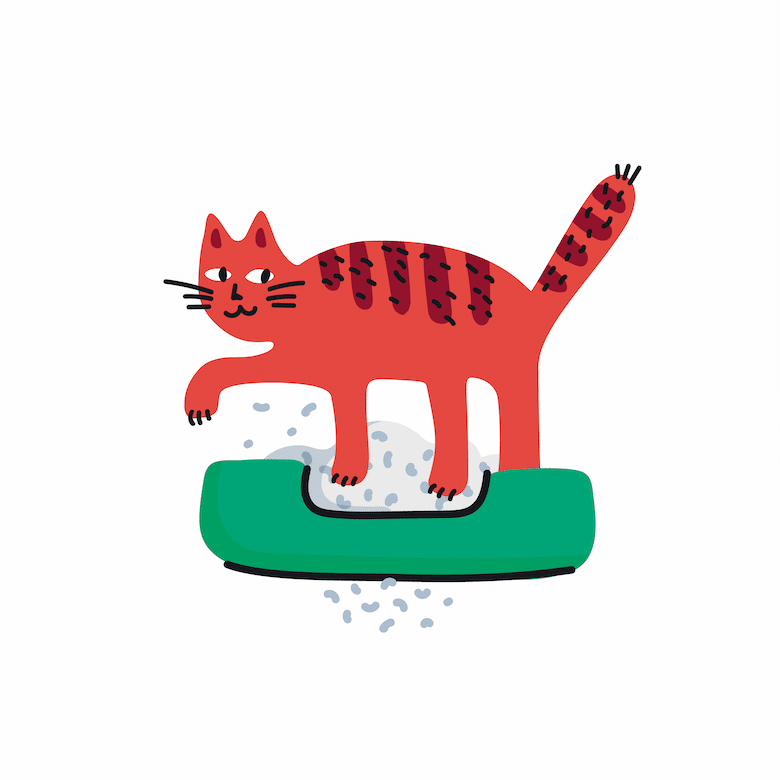Although most cat litters on the market are made from clay (both clumping/scoopable and non-clumping traditional clay litter), cat owners show increasing interest in eco-friendly options. These eco-friendly litters are typically biodegradable and made from sustainable materials (such as corn, grass and wheat) or from reclaimed or recycled materials, such as newspaper.
“Any opportunity [where] we can divert or reuse materials to support our Earth’s resources is a great alternative for everyone,” says Tony Piede, senior brand manager for Tidy Cats, which makes the paper-based litter Yesterday’s News. “Yesterday’s News diverts used paper and cardboard waste. Paper is also a material that easily decomposes once it reaches its life cycle completion.”
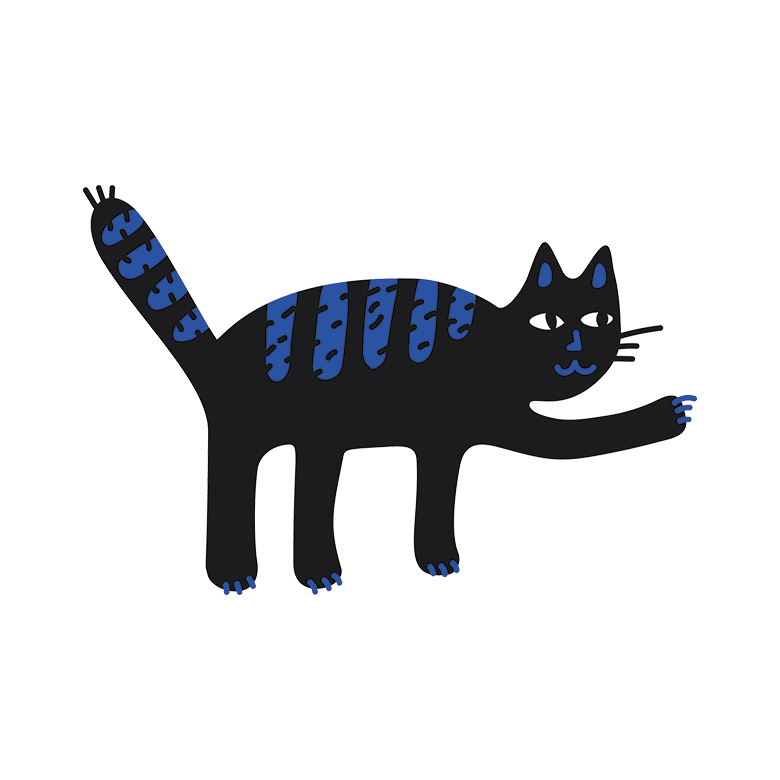
Photo: Getty Images
In addition to being environmentally conscious, eco-friendly litters are typically free from potentially harmful chemicals, and most also weigh much less than clay litters (an added bonus when carrying them from the car to your house). Some eco-friendly litters are even advertised to be flushable.
“Whether it’s the product itself or the packaging it comes in, manufacturers are evolving to make their products eco-friendlier,” says Tierra Bonaldi, American Pet Products Association pet lifestyle expert. “We’ve seen new litter pebbles and walnut litter, so there are definitely new litter materials coming into the market every year. Litters made from (eco-friendly) materials are known to be less toxic and biodegradable, which makes them great for the environment.”
Dr. Jessica Lowe, medical director of VCA Beacon Hill Cat Hospital in Alexandria, Virginia, says that approximately 70% of clients ask her about cat litter. “Concerns are dust, smell reduction, easily clumps, absorbs urine and cost,” she says, adding that about a quarter of her clients ask specifically about natural or eco-friendly litter options. “There is an increase, especially compared to 10 years ago when I was rarely, if ever, asked,” she says.
It’s natural for people who are concerned about using environmentally friendly products for themselves and their families to think about their pets, too. “There is a certain sector of consumers who seek out healthy, safe and environmentally friendly products for their homes, including the choice they make in the litter aisle,” says Jean Broders, senior brand manager for Kent Pet Group, manufacturer of World’s Best Cat Litter. “Consumers want a cat litter that is easy to maintain, long-lasting and cost-effective. They will invest in a litter that performs but appreciate the added benefits of healthy, safe and environmentally friendly.”
Here are some eco-friendly cat litter options
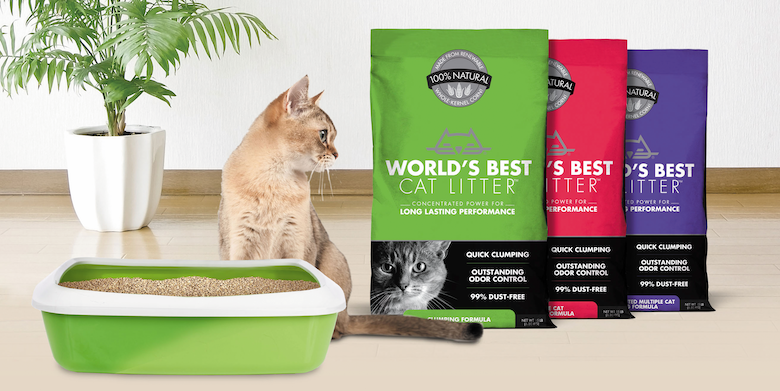
World’s Best Cat Litter formulas are made with whole-kernel corn
Corn
Depending on the brand, corn-based litter may be made from corn cobs or corn kernels. Corn cobs are a waste product of the food industry that would otherwise be discarded, and corn is renewable, sustainable and biodegradable. Both types of corn-based litter are clumping and scoopable. Corn litter is soft, naturally absorbent and virtually dust-free, and great at controlling odors.
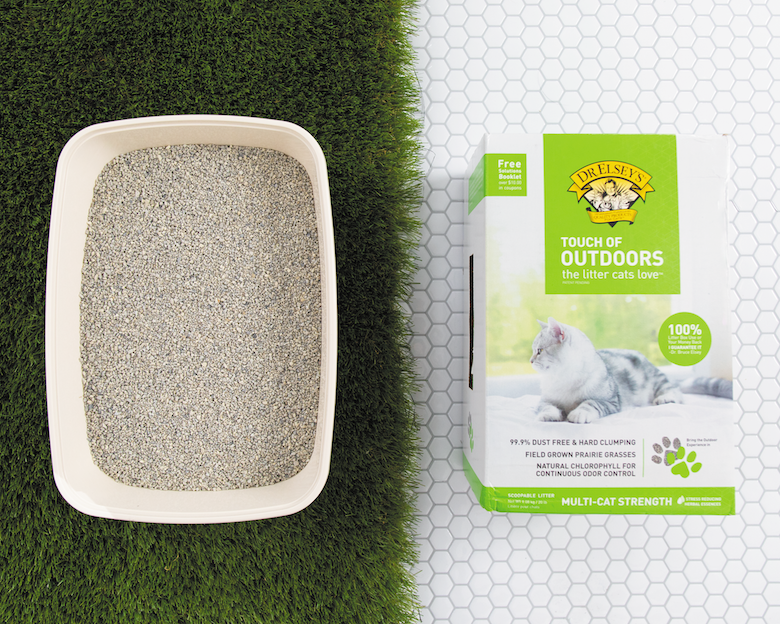
Dr. Elsey’s Touch of Outdoors Litter is made from prairie grasses
Grass
One of the newer eco-friendly litter materials, grass-based litters are made from grass or grass seed. In addition to being renewable, sustainable and biodegradable, grass litter is extremely absorbent, clumpable, scoopable and virtually dust-free.
Paper
Paper litter, which may be formulated as pellets or as granules, is generally made from recycled paper. While quite absorbent, paper litters don’t usually clump. This type of litter should be scooped and changed frequently to control odors. Paper-based litter is virtually dust-free.
Walnut
Litter made from ground walnut shells capitalizes on another food-industry byproduct that would typically be tossed. Naturally absorbent, walnut shell litter is virtually dust-free and fine-textured, and has a mild, pleasant odor.
Wheat
Wheat is renewable, sustainable and biodegradable, and some wheat-based litters are made from “secondary wheat” (wheat that won’t be used for human consumption). Wheat litter clumps and can be easily scooped, and provides good odor control. It has a soft, fine texture many cats like.
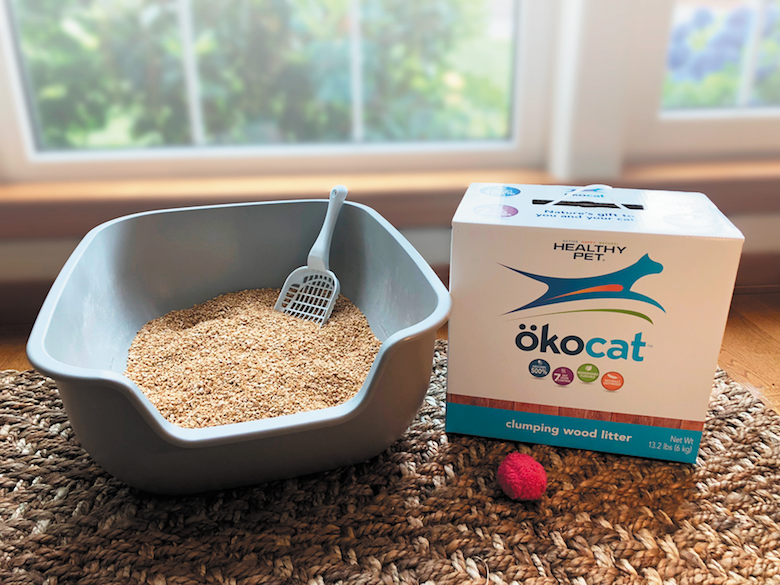
Healthy Pet’s Ökocat is made from sustainable, natural wood fiber
Wood
Litter made from pine, cedar and other woods may be formulated as small pellets or granules, or may be fine like sawdust or wood shavings. Wood-based litter is generally made from recycled lumber industry wood scraps. Pellet wood-based litters are very absorbent but don’t clump. Some finer formulations do clump. Wood-based litters offer excellent odor control but must be frequently scooped and replaced.
Eco-friendly cat litter considerations
With so many eco-friendly litters to choose from, spend some time researching the different types to find one that checks all your boxes. “At the end of the day, litter products need to provide what the owner wants whether that is odor control, anti-clumping, dust-free and a reasonable price point,” Tierra says.
And don’t forget to take you cat’s preferences into account, too. After all, a litter isn’t worth much if your cat won’t use it. “No. 1 is what type of texture do they like,” Dr. Lowe says. “Some cats will not use the litter box strictly because they don’t like the way it feels when they step on it. If your cat loves eco-friendly litter then great, but if they don’t, continue to look until you find the perfect fit.”
Beyond eco-friendly cat litter
Don’t just stop with litter. Go green with your litter box, scooper and even poop bags. Disposable litter boxes that are biodegradable or compostable allow you to be good to the Earth while enjoying easier litter box maintenance. Most are made from paper or cardboard materials that will break down after they’ve served their purpose. Biodegradable litter pan liners that break down in a landfill also make litter box cleanup a snap. Or if you can’t go disposable, look for a litter box made out of recyclable materials.
For scoopers, try one made of eco-friendly materials or made out of recyclable materials. When scooping the poop, put it in a compostable or biodegradable poop bag.
Top photograph: Getty Images
